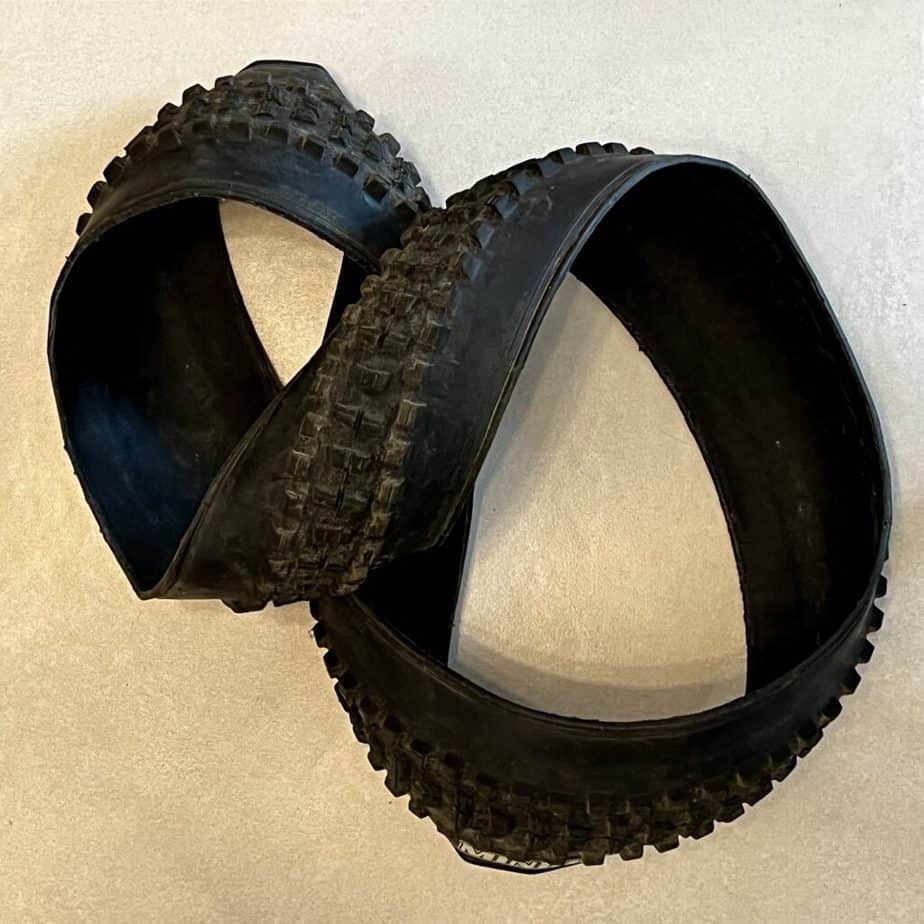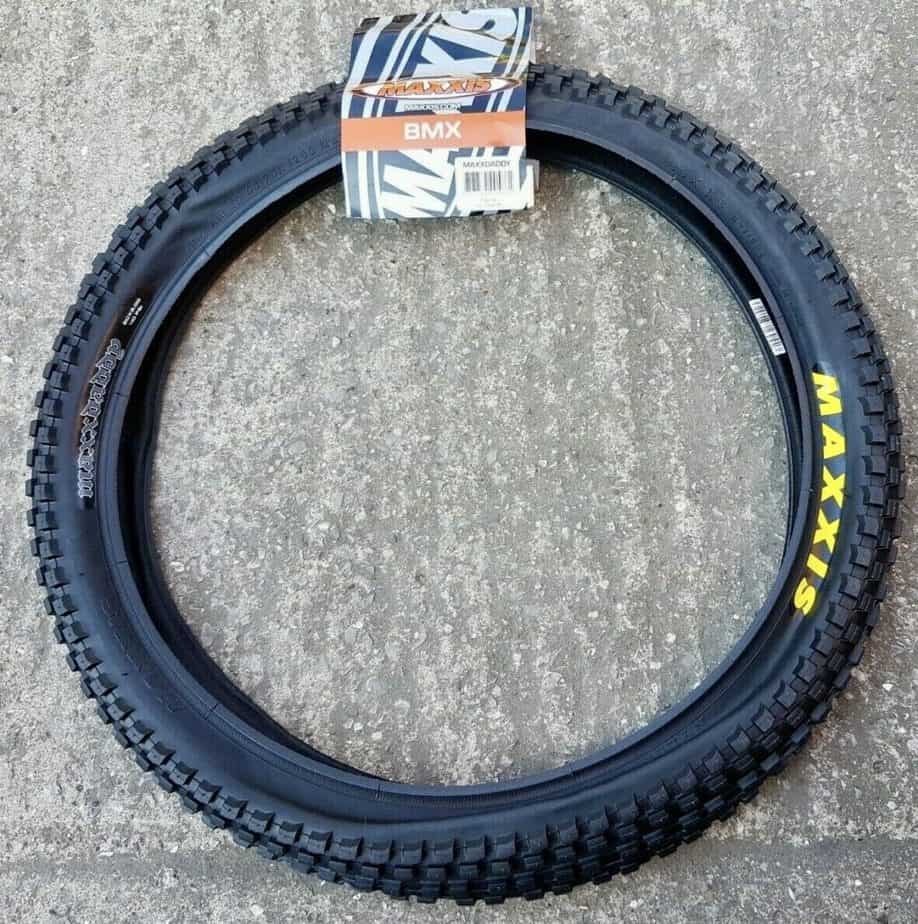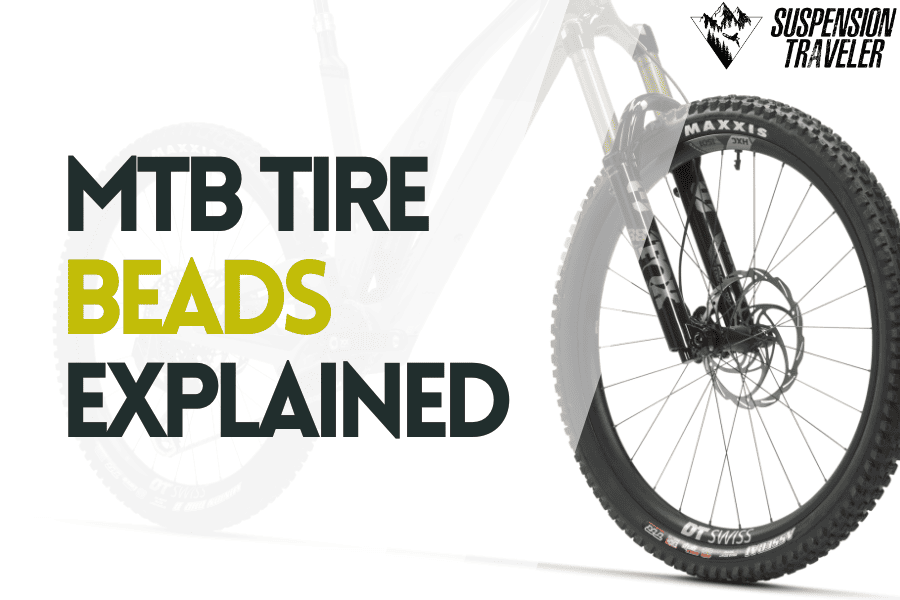The tire beads are what hold the tire on the rim. As the only part of the tire actually touching the rim, beadings are important for a tire to get right – especially for air-tight tubeless tires.
There are different beading materials like steel, Kevlar and aramid.
Better known as wire bead tires and folding tires.
Related MTB Tire Content:
differences between folding bead and wire bead
Wire bead tires are generally heavier and stiffer compared to folding bead tires. With modern materials such as tough Kevlar beads seen in folding tires, steel bead tires have become uncommon. For most riding styles and for installation they are often too rigid.
Even for Downhill, they don’t work noticeably better than modern folding tires. With the rigidity and durability of dual-ply casings and protective inserts (within the casing or in the tire) is all you need when smashing down some park laps.
Also a steel or wire bead tire cannot be folded. Only tires with Kevlar or aramid beads can be foldable tires. The reason is that when the metal in the beading is folded, it remains bent and cannot seal to the rim anymore.

In my opinion, there isn’t a good reason anymore to go with a steel bead tire. You can hardly even find them anymore in MTB shops anyway.
Apart from the actual handling, the main disadvantage of wire bead tires is probably the difficulty you’ll have installing them.
Hands down the most issues I ever had in my tire-changes were with those wire beads. Sure there are some rim and folding tire mismatches from hell, but they are still manageable with better technique or more raw force.
Wire or steel beadings were used for heavy-duty downhill tires, and are still seen on some cheaper end tires. Metal is used to reinforce the contact area with the rim for the tire to be able to handle high-impact riding while keeping a perfect fit.


